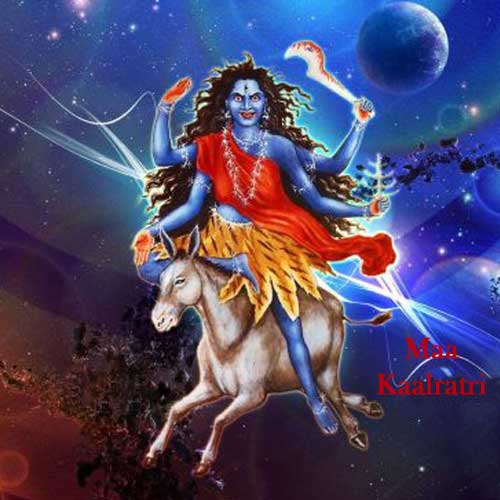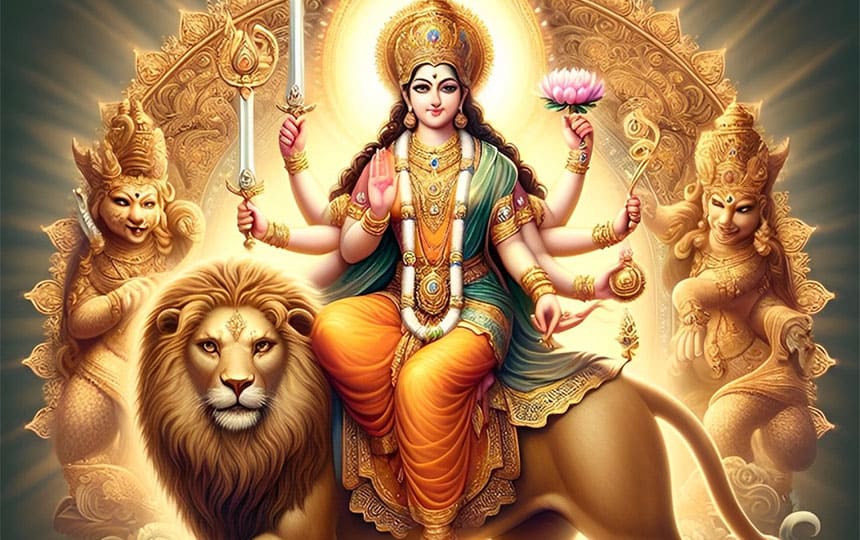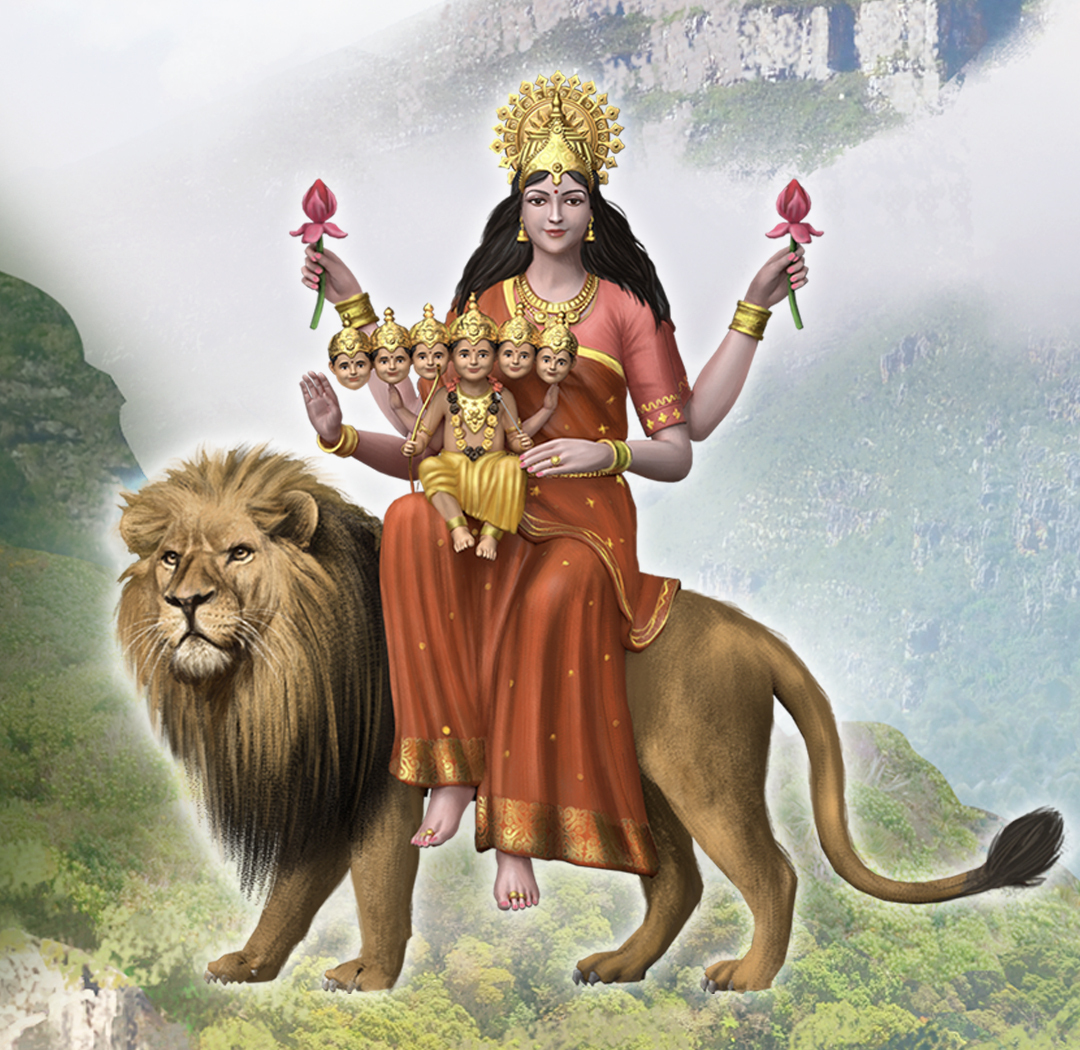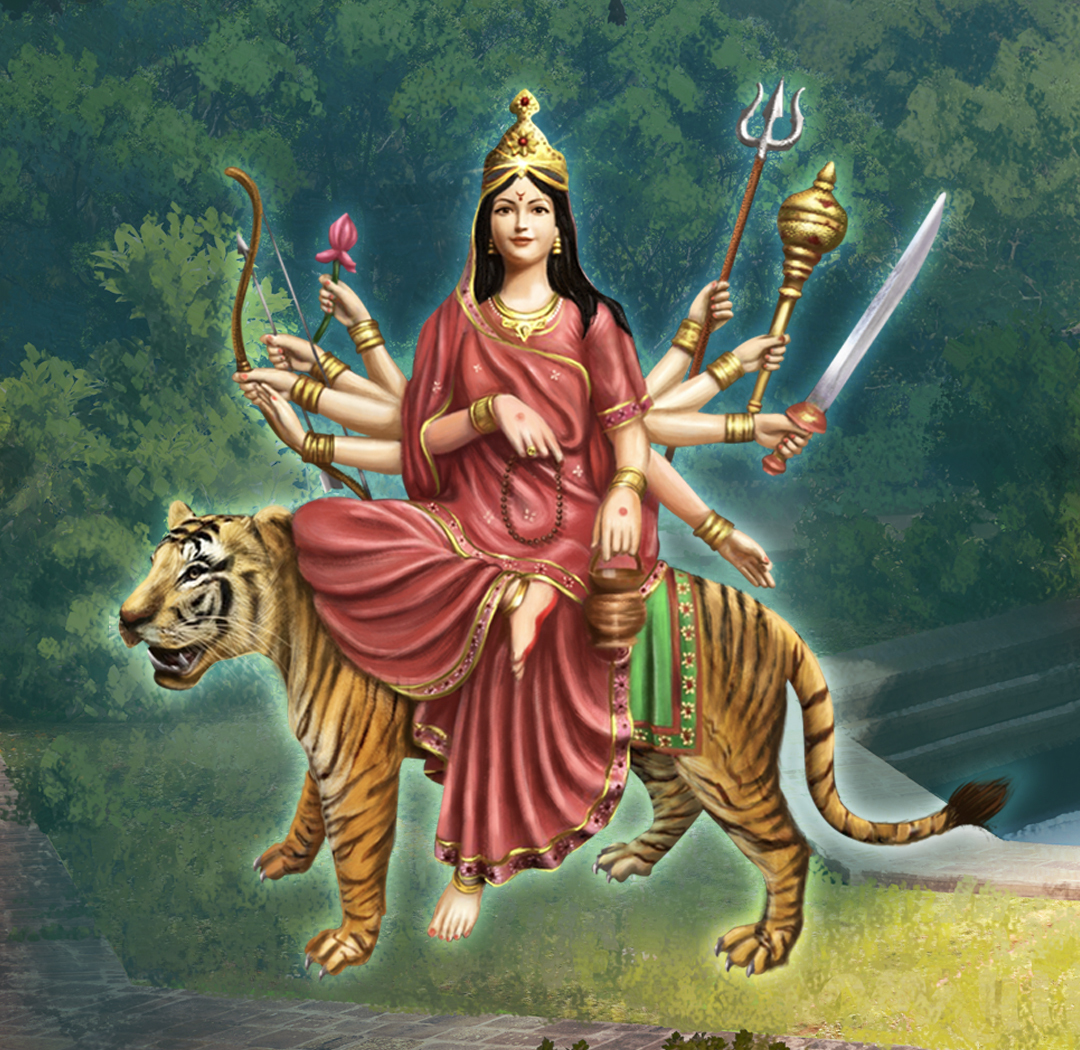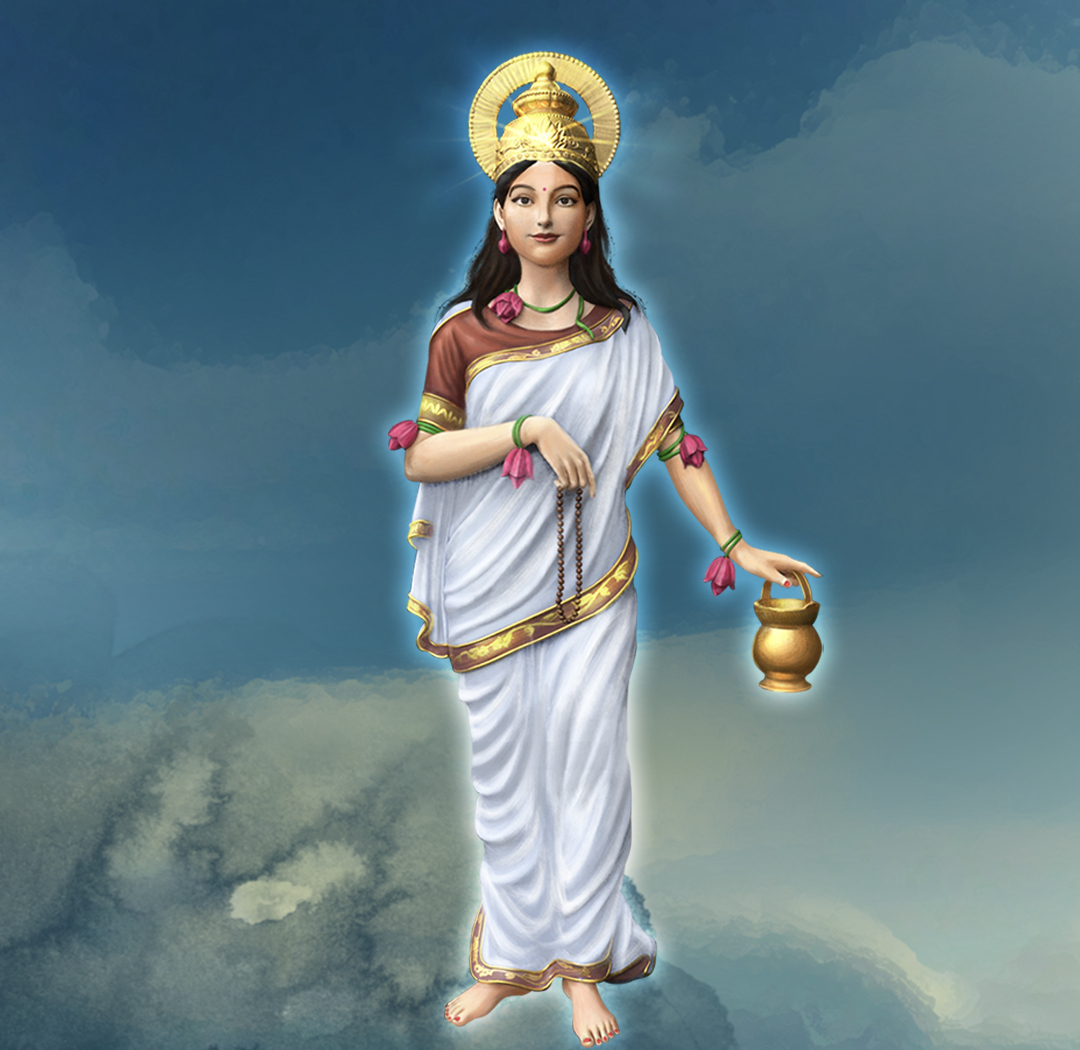The Ninth Night of Navratri and Goddess Siddhidatri The ninth night of Navratri is dedicated to Goddess Siddhidatri. She is a generous goddess who blesses her devotees with all siddhis—special powers or gifts. She brings fulfillment and happiness to their lives. The Golden Light of Fulfillment Siddhidatri shines with a radiant golden light that glows over the Crown chakra, at…
Tag: nine manifestations of goddess durga
Day 8 of Navratri and Maa Mahagauri
The Eighth Night of Navratri and Goddess Mahagauri The eighth night of Navratri celebrates Goddess Mahagauri. She is a kind and pure goddess who removes all sins from her devotees. She cleanses their hearts and minds, making them feel pure and light in every way. The Power of Purity and Inner Peace Mahagauri brings a special energy that feels like…
Day 7 of Navratri and Maa Kaalratri
The Seventh Night of Navratri and Goddess Kaalratri The Seventh night of Navratri is dedicated to Goddess Kaalratri. She is a powerful form of the goddess who removes fear and ignorance from her devotees. She blesses them with strength and courage, helping them face life without fear. The Violet Light and Emotional Healing Goddess Kaalratri is linked to a violet…
Day 6 of Navratri and Maa Kaatyayani
The Sixth Night of Navratri and Goddess Kaatyayani The sixth night of Navratri celebrates Goddess Kaatyayani, a deity who grants boons and fulfills the wishes of her devotees. She glows with a yellow light that represents self-worth, intellect, confidence, and strong moral values, blessing those who worship her. The Yellow Light and Emotional Healing Kaatyayani’s yellow light brings emotional healing…
Day 5 of Navratri and Skand Mata
The fifth night of Navratri is dedicated to Goddess Skandmata, who takes the energies from the other goddesses and turns them into wealth and strength for her devotees. She shines with an indigo light mixed with a silver hue, spreading her divine power and grace. The Indigo Light and Emotional Healing Skandmata’s indigo light, with its silver glow, brings emotional…
Day 4 of Navratri and Mata Kushmanda
The Fourth Night of Navratri and Goddess Kushmanda The fourth night of Navratri celebrates Goddess Kushmanda, who removes sorrows of the mind and ego. She connects the big universe outside with the small universe inside us. Her energy shines as an orange light with a golden hue, inspiring creativity and respect for others’ work while clearing away false pride. The…
Day 3 of Navratri and Mata Chandraghanta
The Third Night of Navratri and Goddess Chandraghanta The third night of Navratri is dedicated to Goddess Chandraghanta, a deity who brings bliss, peace, and calmness. She also supports growth in life’s activities and helps us understand our purpose. She shines with a red light mixed with a pink hue, spreading her divine energy. The Red Light and Emotional Healing…
Day 2 of Navratri and Mata Brahmacharini
The Second Night of Navratri and Goddess Brahmacharini The second night of Navratri is all about Goddess Brahmacharini, the goddess of knowledge and wisdom. Her name means “one who practices devotion” (“Brahma” for divine knowledge and “Charini” for one who follows). She’s shown walking barefoot, holding a rosary and a water pot, symbolizing focus and purity. This night is about…
Day 1 of Navratri and Mata ShailPutri
The First Night of Navratri and Goddess Shailputri Navratri, a nine-night Hindu festival, celebrates the Divine Feminine through the worship of Goddess Durga and her nine forms, known as Navadurga. The first night is dedicated to Goddess Shailputri, whose name means “Daughter of the Mountain” (from “Shail” meaning mountain and “Putri” meaning daughter). She’s often depicted riding a bull and…



